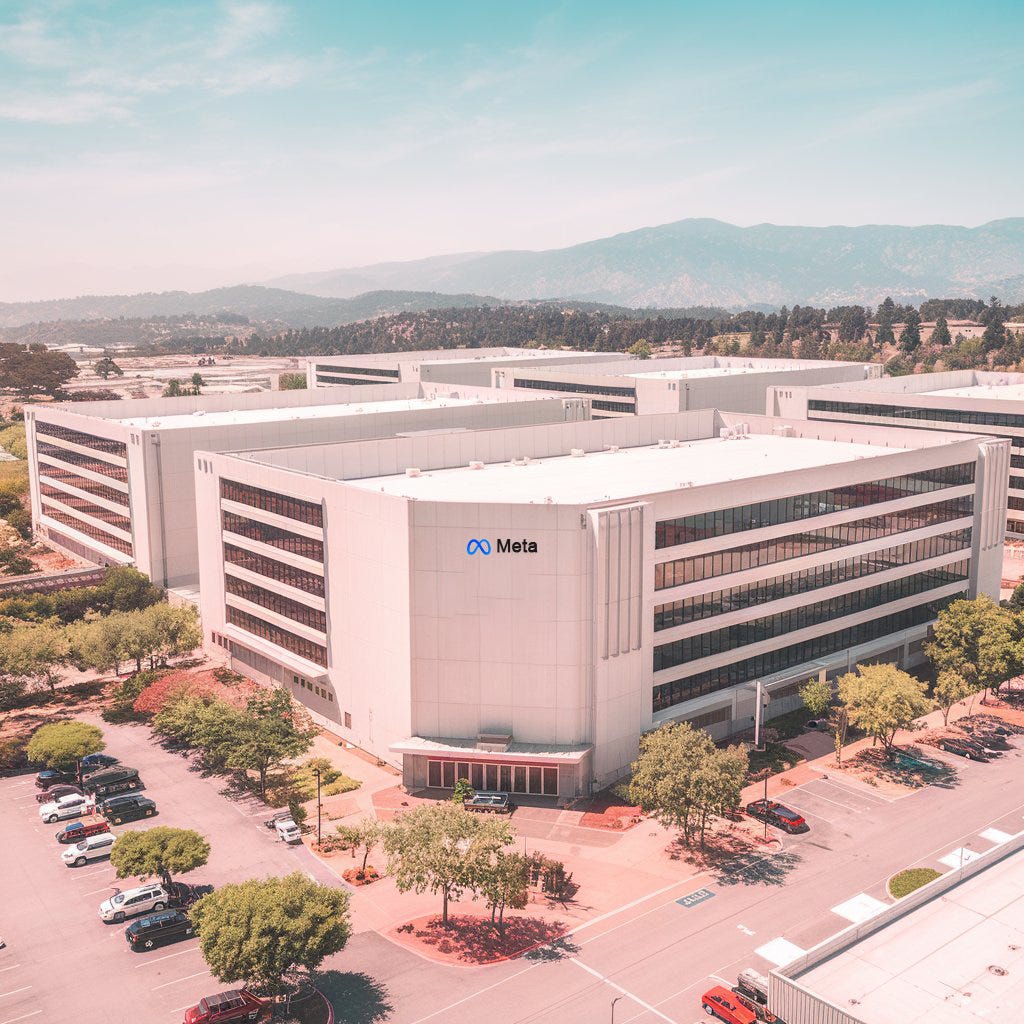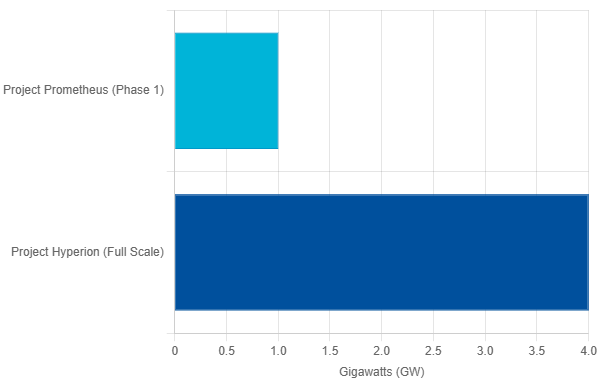Is Meta’s $72B AI Bet the Boldest Infrastructure Play in U.S. History?
Inside Meta’s multi-gigawatt AI data center push and how it could redefine U.S. infrastructure, energy, and compute power
Welcome to Global Data Center Hub. Join 1500+ investors, operators, and innovators reading to stay ahead of the latest trends in the data center sector in developed and emerging markets globally.
Meta is no longer just a social media company.
It’s now the most aggressive infrastructure builder in the United States quietly assembling a multi-gigawatt empire of AI superclusters that could rival Amazon’s 20-year dominance of cloud and logistics.
And while others are talking about models, Meta is pouring concrete.
Prometheus and Hyperion are just the start.
Prometheus in Ohio will consume over 1 gigawatt of power by 2026 enough to run a small city.
Hyperion in Louisiana is already under construction. At full buildout, it will span 4 million square feet and consume up to 5 gigawatts potentially the largest AI data center in the world.
Both projects are part of Meta’s bold plan to control the full stack: compute, power, and people.
Zuckerberg calls it his “superintelligence effort.”
What it really is: an end-run around public cloud dependence, a bet on sovereign AI infrastructure, and possibly the largest private energy expansion in modern U.S. history.
And yet… very few people are paying attention to what’s happening.
This aggressive capital deployment echoes Meta’s $29B AI infrastructure financing strategy, which is quietly redefining how next-gen buildouts are funded in the U.S.
The Shift from Social to Sovereign
Meta’s advantage used to be distribution billions of users on Facebook, Instagram, and WhatsApp.
Now the edge is infrastructure density.
Zuckerberg isn’t trying to outmaneuver Google or Microsoft in the cloud.
He’s trying to out-build them.
Out-wire them.
Out-power them.
And it’s working quietly.
Meta is:
Building its own on-site power plants
Using tents and prefabs to bypass construction bottlenecks
Stacking 500,000+ GPUs in clusters large enough to heat entire counties
No leases. No hyperscaler partnerships. No waiting.
This is not a “data center strategy.”
It’s an energy strategy. A land strategy. A national-scale AI strategy.
A bold move that reopens the debate on onsite vs. offsite power strategies for AI data centers.
A Virtuous Loop of Capital and Compute
Meta’s flywheel is deceptively simple:
Use AI to increase ad performance
Use ad profits to build massive AI clusters
Use clusters to train better AI
Repeat
Zuckerberg has already committed $60–$65 billion in 2025 capex, up from $40 billion last year.
At this pace, Meta will soon surpass the physical infrastructure footprint of Amazon Web Services (AWS) not by serving others, but by building for itself.
It’s the Apple model applied to AI infrastructure: own the silicon, own the stack, own the experience.
Why This Matters
These aren’t just new data centers. They’re digital cities.
Meta’s Louisiana site, Hyperion, covers more acreage than Central Park.
Its Ohio site, Prometheus, is already live-testing on-site natural gas turbines.
Together, they represent:
One of the fastest deployments of AI infrastructure in the West
A redefinition of what it means to scale AGI
A potential doubling of U.S. data center energy demand over the next decade
And the risks are just as massive.
Power-hungry AI clusters now face growing scrutiny from environmental groups, regulators, and policymakers.
Some argue that Meta is greenwashing buying renewable credits while burning gas onsite.
Others worry about water stress and permanent changes to local land use.
But here’s the thing:
The speed of Meta’s buildout may give it a 10-year head start over slower-moving competitors.
Final Thought
Amazon rewired the U.S. for e-commerce.
Meta may be about to rewire it for intelligence.
The question isn’t whether this is sustainable.
The question is: who else can build fast enough to catch up?
Because in this new age of AI, the winner might not be the one with the smartest model…
But the one with the most metal, megawatts, and momentum.


